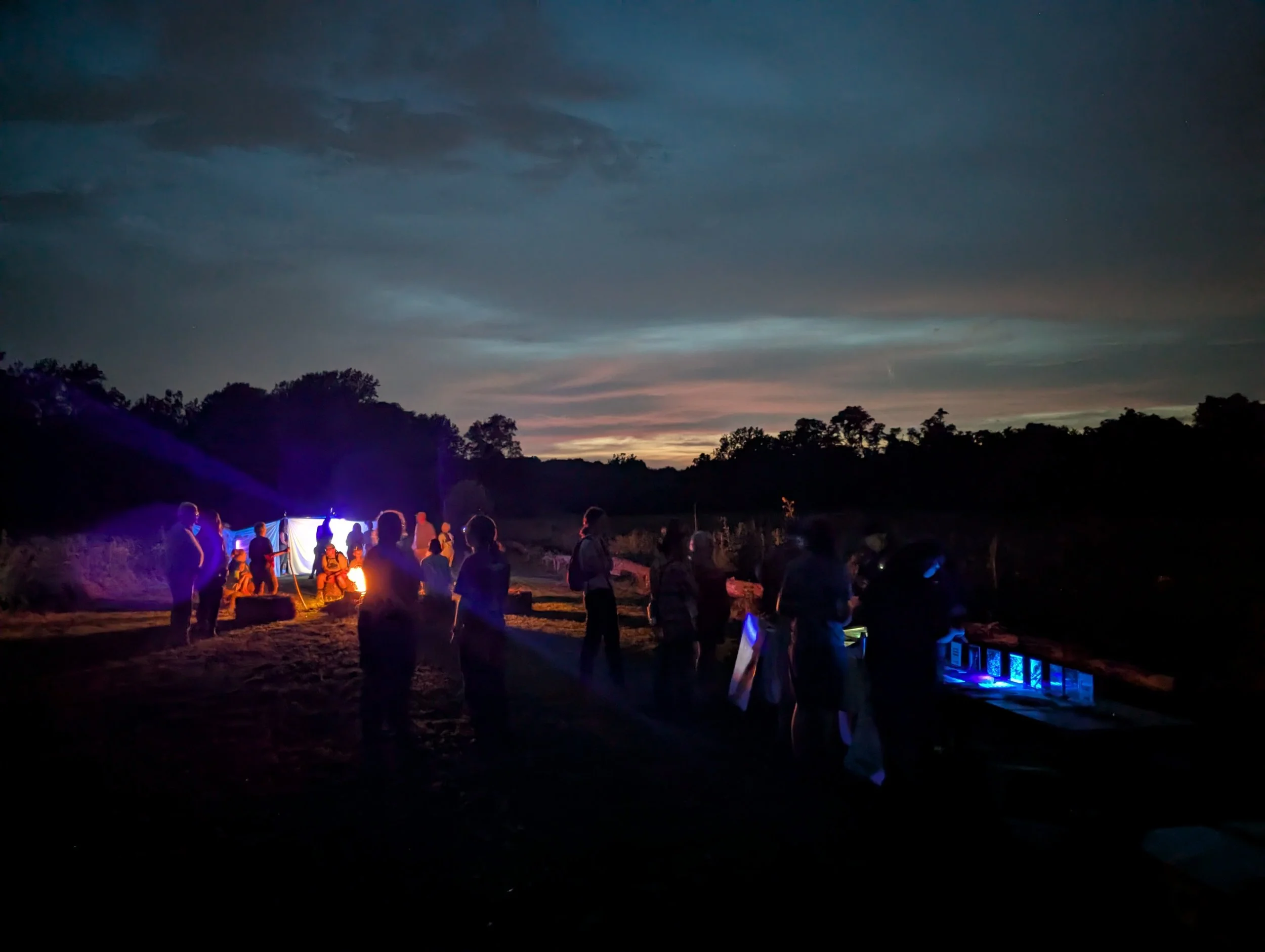On Saturday, July 26, 2025, the Ouabache Land Conservancy hosted an enchanting evening on the prairie for Moth Night Out at Atherton Island Natural Area in southwestern Parke County. The free, family-friendly event drew about 50 nature lovers of all ages eager to celebrate National Moth Week and experience the wonders of the night.
The evening began at 8:30 p.m. with a gentle walk through the prairie, where participants explored what was in bloom and learned how these flowers support native pollinators. As the sun dipped below the horizon, the prairie’s summer colors faded into twilight, making way for the night’s main attractions.
Around 9:15 p.m., guests gathered for a captivating owl program presented by Providence Wildlife Rehabilitation, featuring an Eastern Screech Owl. Thanks to the Wabash Valley Audubon Society, attendees were able to see raptors up close and hear about their unique adaptations and roles in the ecosystem.
Once darkness fully settled in, black lights illuminated sheets set up across the prairie, attracting a dazzling array of moths, beetles, antlions, and other nocturnal insects. Guests marveled at the variety of patterns, colors, and behaviors while learning about the vital role moths play as pollinators. Conversations also touched on which native plants can be grown to support moths and other nighttime pollinators.
The night held even more discoveries. A bat detector picked up the activity of these aerial insect hunters overhead, and in the quiet shadows, glowing patches of “foxfire” — bioluminescent fungi — lit up portions of the forest floor. Moth Night Out proved to be a delightful blend of science, adventure, and community connection under the stars.

